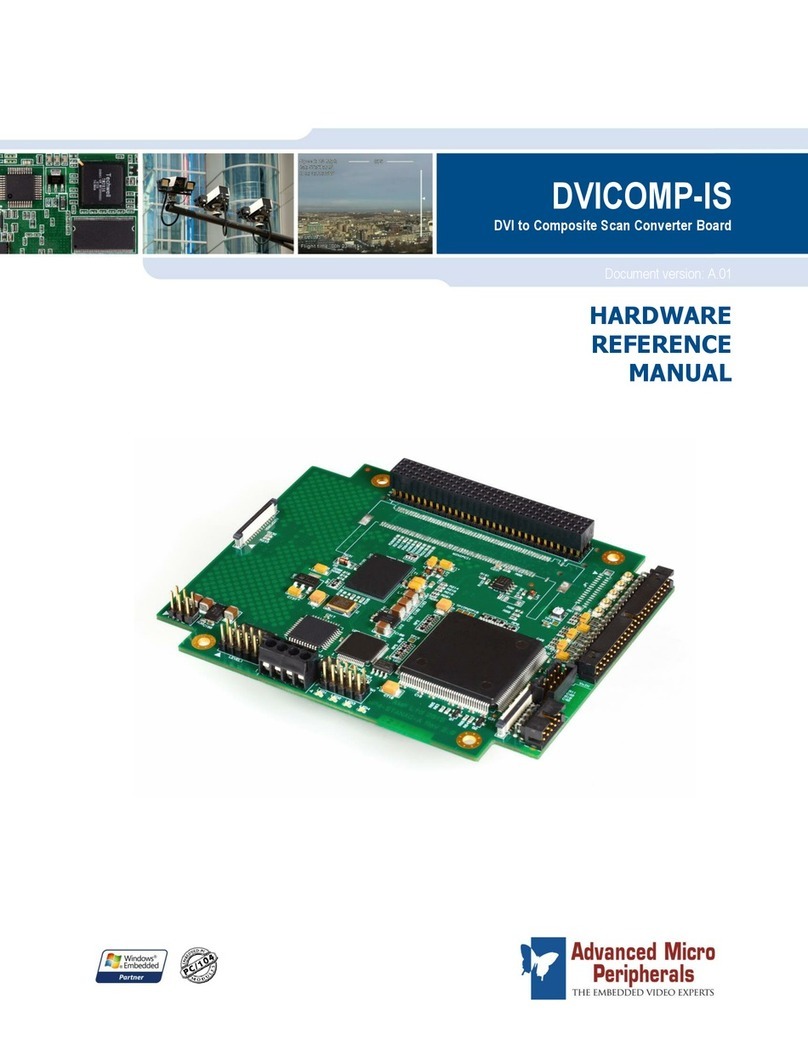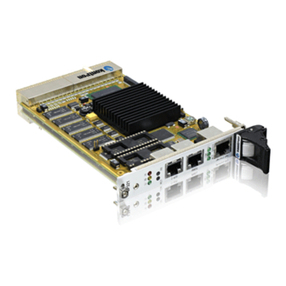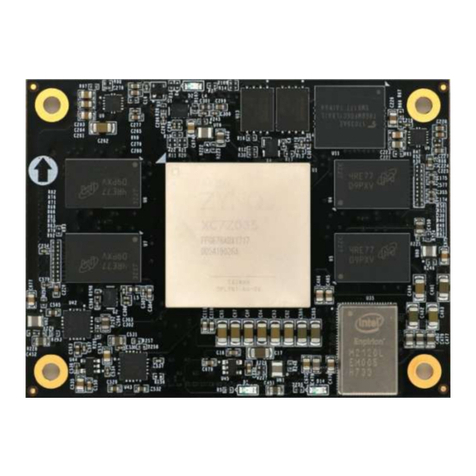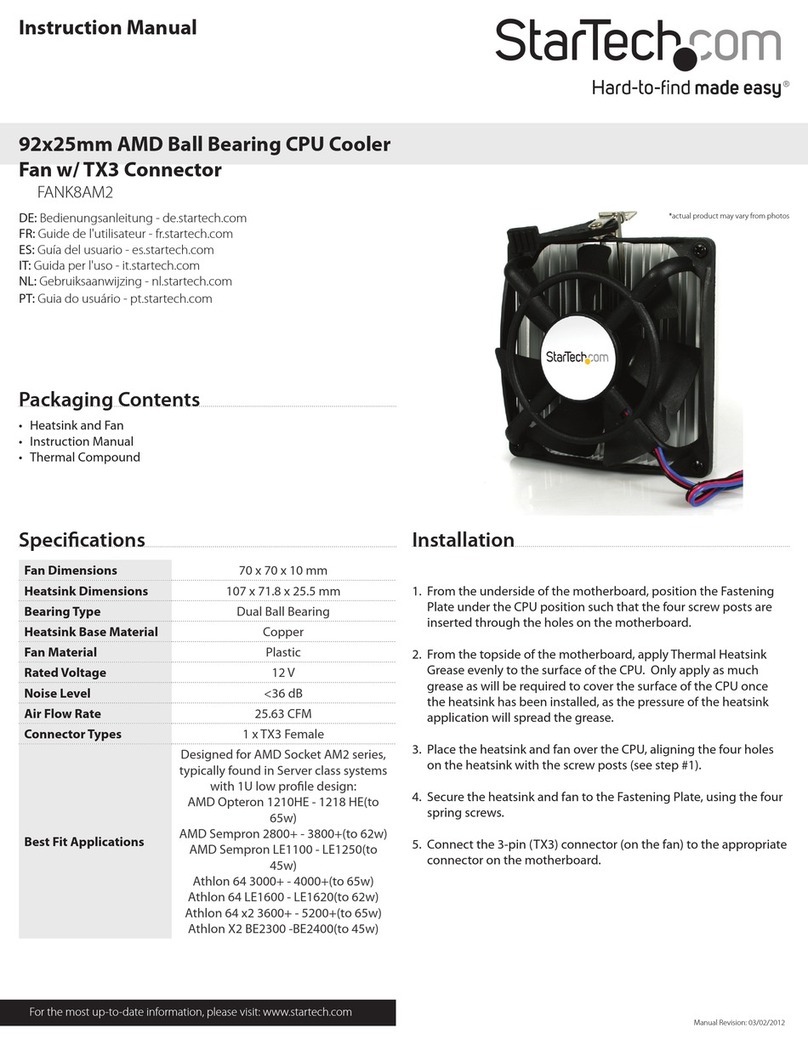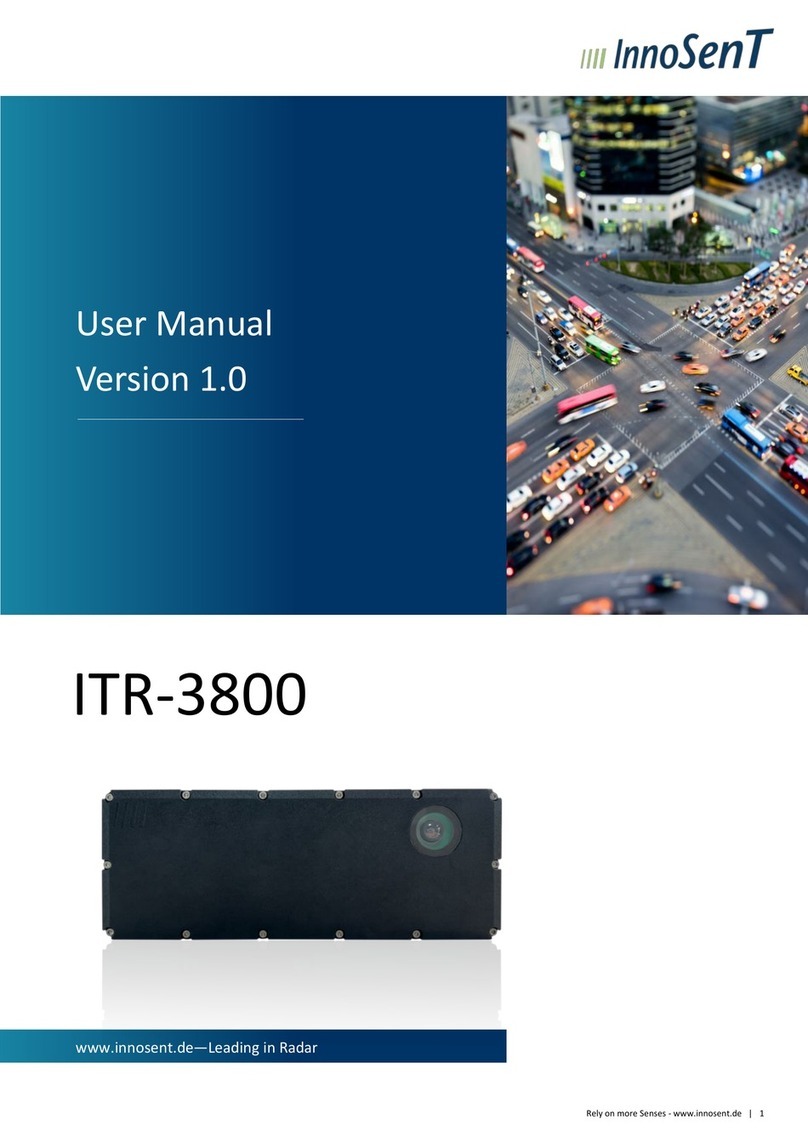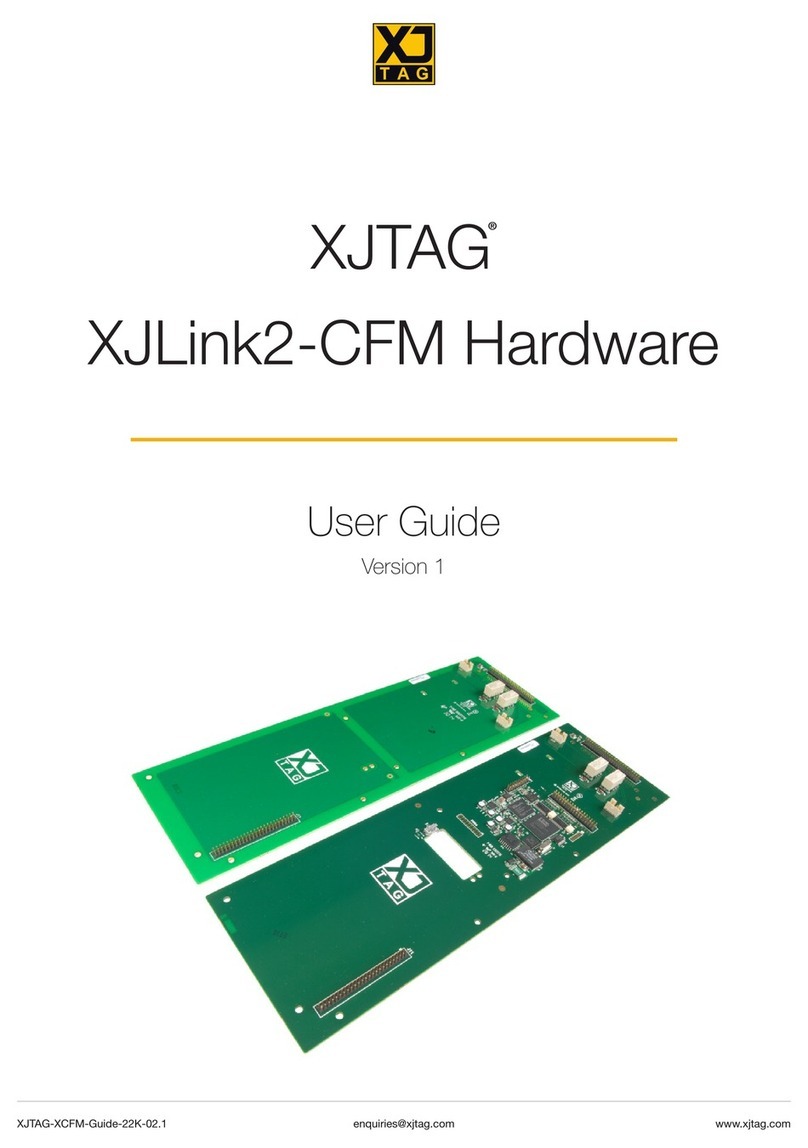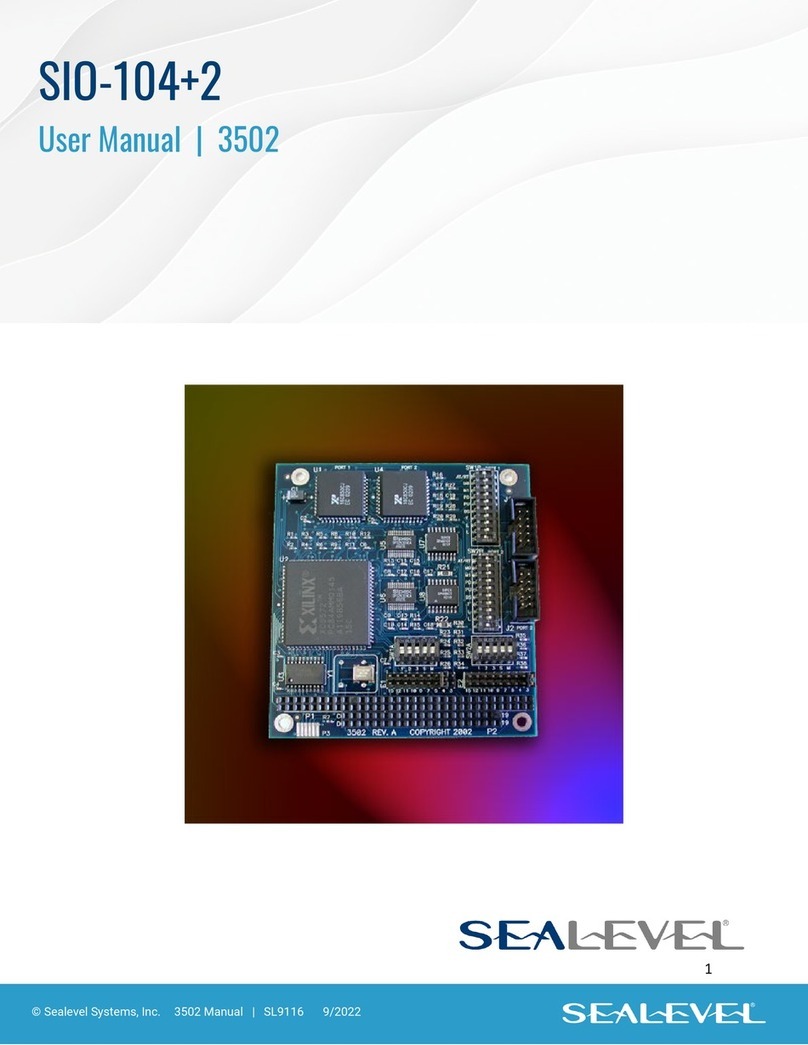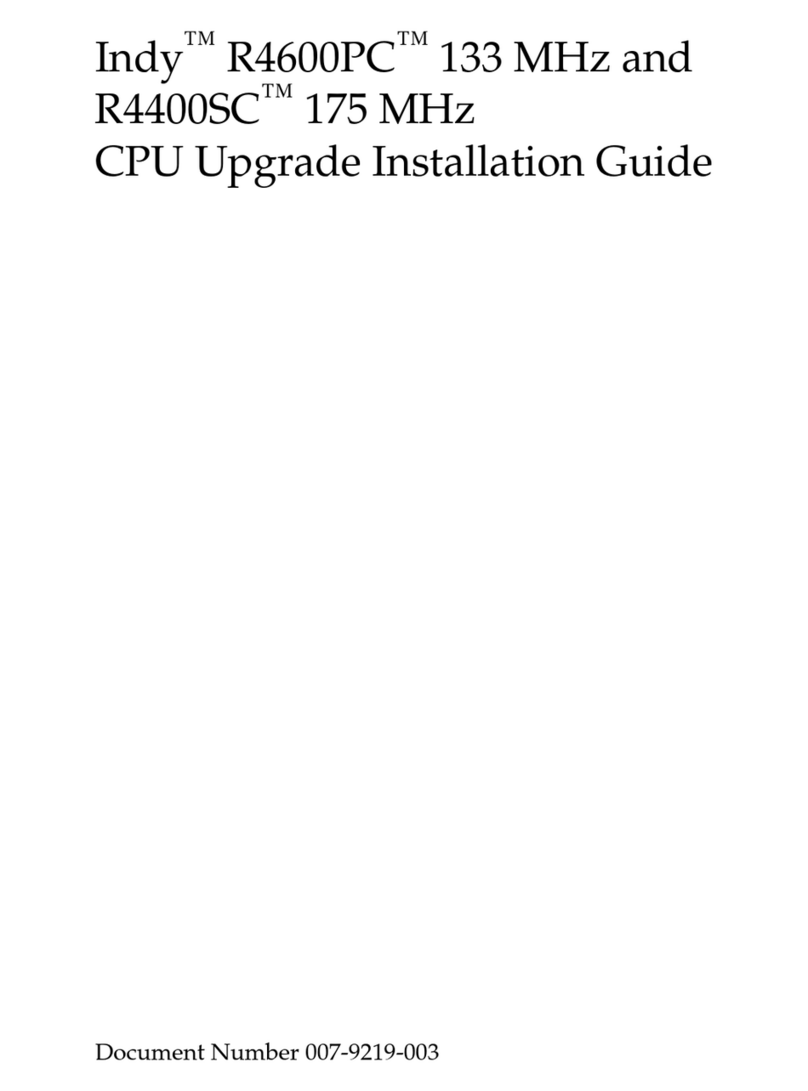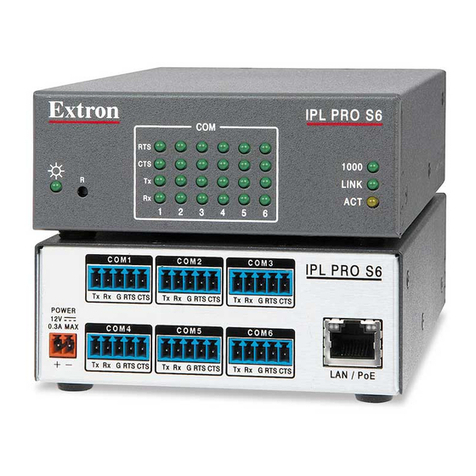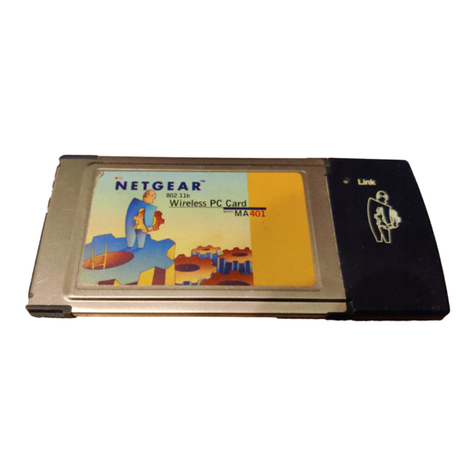Advanced micro peripherals microH264-D4 Quick user guide

HARDWARE
REFERENCE
MANUAL
microH264-D4
4 channel H.264 codec mini PCI Module
Document version: A.02

Definitions
AMP and Advanced Micro Peripherals are the trading names for Advanced Micro Peripherals Inc. and Advanced Micro Peripherals Ltd.
Disclaimer
This document contains information on a new product. Specifications and information herein are subject to change without notice.
AMP reserves the right to make changes to any products herein to improve functioning and design. Although the information in this
document has been carefully reviewed and is believed to be reliable, AMP does not assume any liability arising out of the application
or use of any product or circuit described herein. Nothing in this document is to be taken as a license to operate under or a
recommendation to infringe any patents.
AMP does not recommend the use of any of its products in life support applications wherein a failure or malfunction of the product
may directly threaten life or injury. The user of AMP products in life support applications assumes all risk of such use and indemnifies
AMP against all damages. All information contained in this document is proprietary to AMP and may not be reproduced or disclosed
to any third parties without the written consent of AMP. The circuit design, EPLD programs and artworks are copyright AMP 2008.
The information contained in this document has been carefully checked and is believed to be reliable. However, Advanced Micro
Peripherals Ltd (AMP) makes no guarantee or warranty concerning the accuracy of said information and shall not be responsible for
any loss or damage of whatever nature resulting from the use of, or reliance upon, it. AMP does not guarantee that the use of any
information herein will not infringe upon the patent, trademark, copyright, or other rights of third parties, and no patent or other
license is implied hereby
AMP reserves the right to make changes in the products or specifications, or both, presented in this document at any time and
without notice.
Warranty
This product is supplied with a 1 year limited warranty. The product warranty covers failure of any AMP manufactured product
caused by manufacturing defects. AMP will make all reasonable effort to repair the product or replace it with an identical variant.
AMP reserves the right to replace the returned product with an alternative variant or an equivalent fit, form and functional product.
Trademarks
Tiny486, Tiny486, Tiny586DX, Tiny786LP, Mobile786EBX, Tiny886, Micro886, VAC104, VAC104plus , VAC2000, VAC2000, The
Embedded Video Experts are trademarks of Advanced Micro Peripherals.
All other trademarks recognized.
Revision History
Document version
Date
Comments
Approved
A.00
8th November 2010
Initial release
SC
A.01
19th January 2011
General updates
GM
A.02
22nd August 2011
Added power data
AS
Advanced Micro Peripherals
operates a company-wide
quality management system,
which has been certified by
QMS International plc as
compliant with ISO9001:2000

microH264-D4 Hardware Reference Manual
© 2011 Advanced Micro Peripherals
Document version A.02
3
Contents
1: Introduction ............................................................................................. 4
Features........................................................................................................................................................... 5
microH264-D4 ‘at a glance’.............................................................................................................................. 6
Technical specification ..................................................................................................................................... 7
Functional summary......................................................................................................................................... 8
Ordering information .......................................................................................................................................11
Anti-static handling..........................................................................................................................................11
RoHS compliance ...........................................................................................................................................11
Related documentation...................................................................................................................................11
2: Installation............................................................................................. 12
System requirements..................................................................................................................................... 12
Jumpers and connectors................................................................................................................................ 13
microH264-D4 card installation...................................................................................................................... 17
3: Recording options .................................................................................. 18
Multi-channel recording modes...................................................................................................................... 18
Frame rates ................................................................................................................................................... 18
Frame type encoding..................................................................................................................................... 19
Video Bit Rate control .................................................................................................................................... 19
A: Contacting AMP...................................................................................... 21

© 2011 Advanced Micro Peripherals
Document version A.02
4
1:
Introduction
The microH264-D4 is a 4-channel H.264 (MPEG-4 Part 10 AVC) codec on a single
mini PCI module. The microH264-D4 provides a low power and high performance
solution for capturing and compressing up to 4 concurrent video inputs to H.264
standard. The microH264-D4 not only provides H.264 compression but can also
decompress and playback recordings from storage to display. Utilizing the 32-bit
PCI architecture, the microH264-D4 allows high quality real-time video and audio
capture and compression from (up to) 4 concurrent NTSC or PAL video sources to
disk while at the same time providing an additional path for incoming video to be
previewed on the host screen. The board also provides a text/graphics overlay
and motion detection on all four channels.
AMP can provide custom configurations (subject to a minimum order quantity) for the
microH264-D4. Please contact our Sales team (see A: Contacting Advanced Micro
Peripherals, page 21) to discuss your requirements.

1: Introduction microH264-D4 Hardware Reference Manual
© 2011 Advanced Micro Peripherals
Document version A.02
1
5
Features
▪Four asynchronous live inputs selectable from 4 video inputs.
▪Live input from NTSC/PAL.
▪4 x 4CIF size H.264 (MPEG-4 Part 10 AVC) encode at full frame rate.
▪4 x 4CIF size Motion-JPEG encode at full frame rate.
▪H.264 decode/playback.
▪High speed text overlay (for recording path)
▪High speed text/bit mapped graphics overlay (for analog preview output)
▪Real-time video preview to system VGA and analog NTSC / PAL output.
▪Motion detection available on all channels.
▪RS-485 PTZ control output (optional)
▪High performance 133MB/s DMA burst transfer on PCI bus.
▪Software support under Windows-(XP, XP Embedded) and Linux.
▪Compact Type-III mini PCI module.

1: Introduction microH264-D4 Hardware Reference Manual
© 2011 Advanced Micro Peripherals
Document version A.02
1
6
microH264-D4 ‘at a glance’
Audio input/output and RS-485
PTZ control connections
Standard mini PCI connections
Video inputs
Video output

1: Introduction microH264-D4 Hardware Reference Manual
© 2011 Advanced Micro Peripherals
Document version A.02
1
7
Technical specification
Video input: Standard CCIR601-NTSC, CCIR-PAL
NTSC-M, NTSC-Japan
PAL-B, PAL-D, PAL-G, PAL-H, PAL-I, PAL-M, PAL-N
Software selectable brightness, contrast and saturation
control.
1V peak-to-peak (75Ω input impedance).
Video compression: H.264 video compression.
ITU-T Rec. H.264 Baseline profile, Level 3
M-JPEG video compression (optional SDK support).
4 channels NTSC full size (704x480) at 30fps.
4 channels PAL full size (704x576) at 25fps.
Programmable quantization value.
Constant Bit Rate (CBR), Variable Bit Rate (VBR) support.
Supports I, P frame compression.
Latency: 80ms encoding
Audio input: Four channel mono input.
Voice quality mono or microphone sound input per
channel (1Vrms)
Provides Audio/Video Synchronisation
Audio compression: 8bit 8KHz u-Law 64Kbps.
G.723 Audio CODEC.
System file record: AVI format.
System file Windows Media Player (with H.264 video compliant
playback: decoder).
mini PCI: 133MB/sec bus bandwidth.
PCI bus master/initiator.
Power: +5V and +3.3V required.
Total board power dissipation of 2.6 W (max).
Environmental: 0ºC to 60ºC.
-40ºC to +85ºC (-EXT option).

1: Introduction microH264-D4 Hardware Reference Manual
© 2011 Advanced Micro Peripherals
Document version A.02
1
8
Functional summary
Signal sources
The microH264-D4 is designed to capture and record from up to four separate
and unrelated video sources simultaneously. Each of the four video input channels
of the microH264-D4 features a video frame grabber and an audio digitizer. Each
frame grabber contains a digital NTSC/PAL video and each video channel has an
associated audio input. A single audio input is associated with each live video
channel.
Video digitization
Composite NTSC or PAL video is input to the microH264-D4 through the U.FL
miniature coax connector, CX1, CX2, CX3 and CX4. The video is AC-coupled and
fed to the on-board decoders of the individual frame grabbers. The video
decoders automatically detect whether the incoming video signal is NTSC or PAL
and generate the correct timing output signals. Each video channel is first
decoded to chrominance and luminance signals and then digitized by high speed
analog-to-digital (A2D) converters. The A2Ds output are passed to the H.264
encoder.

1: Introduction microH264-D4 Hardware Reference Manual
© 2011 Advanced Micro Peripherals
Document version A.02
1
9
Real time live video H.264 encoding
Digital video data streams from the 4 Frame Stores are routed to the hardware
H.264 encoder engine where the video can be compressed.
Each of the video channels can be compressed to a separate H.264 stream,
resulting in four separate H.264 streams which can be written to disk (or LAN) as
separate files. These streams can be up to full size at full frame rate.
The encoding engine continuously encodes the video streams and uses its PCI
bus Master/Initiator interface to transfer data across the bus to the system
memory or disk.
Note: The encoding path only supports a simple text overlay capability.
Video Preview
The microH264-D4 provides a secondary video path allowing the recorded video
to be streamed to the graphics controller buffer of the host system for video
previewing. The Preview output can also be used to view an alternate video
source while recording other inputs. The Preview information is also available as a
composite NTSC/PAL output suitable for driving a NTSC/PAL or RS-170 display
device.
Note: The VGA preview output does not include an overlay capability, however,
the composite analog output does offer support for full color, bit mapped graphics
overlay with alpha-blending.
Real time H.264 video decoding / playback
The microH264-D4 can receive H.264 encoded video data over the PC/104
-Plus
bus and decode it to a raw digital video stream. This is fed into a high speed
digital-to-analog converter and then encoded to analog composite video as either
NTSC or PAL. Additionally, the raw digital video stream can be displayed on the
system VGA using the real time video preview functionality.
Maximum image size of decoded video is 704x480 (NTSC) or 704x576 for PAL.
Audio data which is part of the original recording is also decoded and played back
in synchronization with the video.
In addition to playback to the system display VGA device, the microH264-D4 also
provides a composite NTSC/PAL playback output suitable for directly driving a
PAL/NTSC or RS170 display device.
OSD Video Text/Graphics Overlay
The microH264-D4 has two supported modes for OSD overlay;
A simple (single color) text overlay may be added to the recording path for the
video data. In addition to this, a full color bit-mapped graphics overlay feature is
available for the analog preview output. This offers a choice of 64k colors (16 bit)

1: Introduction microH264-D4 Hardware Reference Manual
© 2011 Advanced Micro Peripherals
Document version A.02
1
10
and the ability to use up to 64 levels of alpha-blending between the graphics data
and input video source.
Note: There is no overlay functionality for the host VGA controller preview path.
Motion Detection and Event Triggers
The microH264-D4 supports automatic motion detection on a per channel basis.
The ‘sensitivity’ of the motion detection can be set independently per channel.
Each channel supports 330 (NTSC) or 396 (PAL) detection blocks.
Using the motion-detection feature, the microH264-D4 can be operated in a
‘baby-sitting’ mode where recording is committed to disk only when scene motion
event is detected, to make most efficient use of disk storage.
Software for the microH264-D4 allows recording of pre-trigger, on-trigger and
post-trigger events.

1: Introduction microH264-D4 Hardware Reference Manual
© 2011 Advanced Micro Peripherals
Document version A.02
1
11
Ordering information
The following part number(s) can be used when ordering:
microH264-D4 4 channel H.264 video encoder.
microH264-D4-EXT Extended temperature (-40ºC to +85ºC) 4 channel
H.264 video encoder.
Cable-microH264/4-1 x5 U.FL to BNC socket cables.
Anti-static handling
The board(s) supplied contain electrostatic components that are susceptible to
permanent damage from electrostatic discharge (static electricity). To prevent
electrostatic discharge, the boards are supplied in anti-static packaging.
When handling a board, observe the following anti-static precautions to alleviate
risk of damage:
▪Remove the board(s) from the packaging only when you are working on an
anti-static, earthed surface and wearing an anti-static wrist strap.
▪Retain the anti-static packaging that the board(s) were supplied in. If you
remove a board from a system, store it in this packaging.
RoHS compliance
The European RoHS Directive (Restriction on the use of certain Hazardous
Substances –Directive 2002/95/EC) limits the amount of six specific substances
within the composition of the product. The microH264-D4 is RoHS compliant.
Related documentation
The following documentation and software may be of use whilst reading this
guide:
▪Video Recording SDK Software Reference Manual for MPEG4000-D4, VCODEC-
H264-D4, microMPEG4-D4 and microH264-D4.
▪Video Streaming SDK Software Reference Manual for MPEG4000-D4, VCODEC-
H264-D4, microMPEG4-D4 and microH264-D4.

© 2011 Advanced Micro Peripherals
Document version A.02
12
2:
Installation
System requirements
Processor Pentium-class CPU, 266MHz or faster
Memory 128MB memory or greater
Bus Mini PCI type IIIB slot
Operating system Windows (2000, XP, XP Embedded) or Linux.

2: Installation microH264-D4 Hardware Reference Manual
© 2011 Advanced Micro Peripherals
Document version A.02
2
13
Jumpers and connectors
The following diagram shows the location of the jumpers and connectors available on
the microH264-D4:
JP2
J1
Conventions
The following pages provide information about these jumpers and connectors.
All illustrations on these pages are shown in the same orientation as the
photograph above, unless otherwise stated.
CX1
CX2
CX3
CX4
CX5

2: Installation microH264-D4 Hardware Reference Manual
© 2011 Advanced Micro Peripherals
Document version A.02
2
14
There are seven connectors on the microH264-D4 module:
Connector
Signal
See…
J1
mini PCI bus.
J1 –Bus connector.
JP2
Audio input channels A –D.
JP2 - Audio, next page.
CX1
Video-in channel A.
CX1 to CX4 - Composite video
inputs.
CX2
Video-in channel B.
CX1 to CX4 - Composite video
inputs.
CX3
Video-in channel C.
CX1 to CX4 - Composite video
inputs.
CX4
Video-in channel D.
CX1 to CX4 - Composite video
inputs.
CX5
Video-out
CX5 - Composite video output
J1 –Bus connector
Standard mini PCI-type III 32-bit PCI Rev 2.1 compliant bus, 3.3V and +5V
operation.

2: Installation microH264-D4 Hardware Reference Manual
© 2011 Advanced Micro Peripherals
Document version A.02
2
15
JP2 –Audio and [optional] RS-485 PTZ Control
Audio signaling and the RS-485 half duplex serial lines are connected via the 30-
way 0.5mm Molex Flat Flex Connector.
Pin
Signal
Pin
Signal
1
RS-485 –PTZ
2
GND
3
RS-485 + PTZ
4
GND
5
N/C
6
GND
7
N/C
8
GND
9
N/C
10
GND
11
N/C
12
GND
13
N/C
14
GND
15
N/C
16
GND
17
N/C
18
GND
19
N/C
20
AGND
21
Audio-out
22
AGND
23
Audio-in channel A
24
AGND
25
Audio-in channel B
26
AGND
27
Audio-in channel C
28
AGND
29
Audio-in channel D
30
AGND
NOTE 1:
THE STANDARD SOFTWARE DRIVERS SUPPLIED BY AMP ENABLES AUDIO TO BE CAPTURED ON
ALL FOUR INPUT CHANNELS, HOWEVER THE DRIVER ONLY SUPPORTS AUDIO OUTPUT FOR H.264
PLAYBACK.
NOTE 2:
THE MOLEX PART NUMBER FOR THE 30 WAY CONNECTOR IS 52435-3072. THIS IS A 0.5MM PITCH
RIGHT/ANGLED, TOP CONTACT, ZIF CONNECTOR. PLEASE CONTACT AMP FOR MORE
INFORMATION ABOUT CABLES AND THE AUDIO I/O ADAPTER MODULE.
NOTE 3:
THE RS485 SIGNALS ARE TERMINATED WITH A 200ΩPARALLEL RESISTOR.

2: Installation microH264-D4 Hardware Reference Manual
© 2011 Advanced Micro Peripherals
Document version A.02
2
16
CX1 to CX4 –Composite video inputs
Video inputs are implemented using U.FL miniature coaxial connectors, one input
for each channel. An optional 150mm U.FL to BNC adapter cable is available from
AMP to simplify the process of connecting cameras to the composite video inputs
of the microH264-D4.
Connector
Signal
CX1
Video-in channel A.
CX2
Video-in channel B.
CX3
Video-in channel C
CX4
Video-in channel D.
CX5 –Composite video output
Composite video output is implemented using a U.FL miniature coaxial connector.

2: Installation microH264-D4 Hardware Reference Manual
© 2011 Advanced Micro Peripherals
Document version A.02
2
17
microH264-D4 card installation
Software for the microH264-D4 is provided on a CD-ROM.
The video input cable should be plugged into CX1 and a suitable live video source
connected.
If you are using a recent BIOS version and operating system, the microH264-D4
should be detected automatically.
Software driver installation should be done from the supplied CD-ROM.
Further instructions (and demo programs) pertinent to particular operating
systems are provided on the driver CD-ROM.

© 2011 Advanced Micro Peripherals
Document version A.02
18
3:
Recording
options
Multi-channel recording modes
The microH264-D4 can perform recording of up to four channels at full resolution
during multi-channel recording at a configurable frame rates.
There is the option to record only video or both video and audio.
Video from the four frame grabber channels A, B, C and D is recorded as 4
separate and individual streams. In this mode, encoding parameters can be set
for each channel on a per-channel basis allowing different settings for each of the
channels. Each channel may be recorded with or without audio.
Frame rates
The default frame rates are 29.97fps and 25fps for NTSC and PAL respectively.
However, for increased flexibility, additional fractional frame rates are supported.
Please see the software reference manual for further details.

3: Recording options microH264-D4 Hardware Reference Manual
© 2011 Advanced Micro Peripherals
Document version A.02
3
19
Frame type encoding
The microH264-D4 supports two frame encoding schemes within the H.264
requirements to provide flexibility and optimize encoding efficiency and storage
space. The default is I/P encoding, where both I and P frames are involved in the
encoding. An alternative is I-only encoding. With I/P encoding, the I interval, which
is defined as the number of P-frames between I-frames can be set to any number
between 1 and 255.
Video Bit Rate control
The Video Bit Rate can be set separately for each channel of compression (and
hence storage efficiency) by using one of the three bit rate control schemes –
Variable Bit Rate (VBR), Constant Bit Rate (CBR) and Hybrid Bit Rate (HBR).
With VBR, the Quantization value (default of 5) can be set between 1 and 31 to
optimize efficiency for a particular application (with 1 being highest and 31 being
lowest quality). This mode strives to keep the quality constant and will change
the bit rate accordingly.
The default bit rate for CBR is 1Mbit/sec. However, the actual bit rate may change
by +/-10% around the set figure until the system ‘settles down’.
CBR therefore does not guarantee that the bit rate in practice will be exactly as
set –the microH264-D4 simply does its best to achieve the set CBR figure. The
real life bit rate when in CBR mode will depend on the incoming video, motion
and other environmental factors.
With HBR, the microH264-D4 is given an upper and lower bit rate limit and will
attempt to avoid abrupt changes in bit rate by changing the picture quality
gradually only when the bit rate limits are exceeded.
It may be worth finding out experimentally the optimum CBR setting for a
particular application environment in order to make the best use of CBR
configuration.

3: Recording options microH264-D4 Hardware Reference Manual
© 2011 Advanced Micro Peripherals
Document version A.02
3
20
Hints for reducing bit rates
There are four ways that you can reduce the bit rate and hence optimize storage:
▪Reduce the picture size
▪Increase the quantization value
▪Reduce the frame rate
▪Increase the I picture interval
NOTE:
THESE OPTIONS MIGHT NOT BE AVAILABLE UNDER CBR.
IN CBR, QUANTIZATION VALUE IS CONTROLLED BY THE MICROH264-D4 TO MEET THE SET BIT
RATE ONCE THE PICTURE SIZE, FRAME RATE AND I PICTURE INTERVAL ARE FIXED.
Table of contents
Other Advanced micro peripherals Computer Hardware manuals
Popular Computer Hardware manuals by other brands
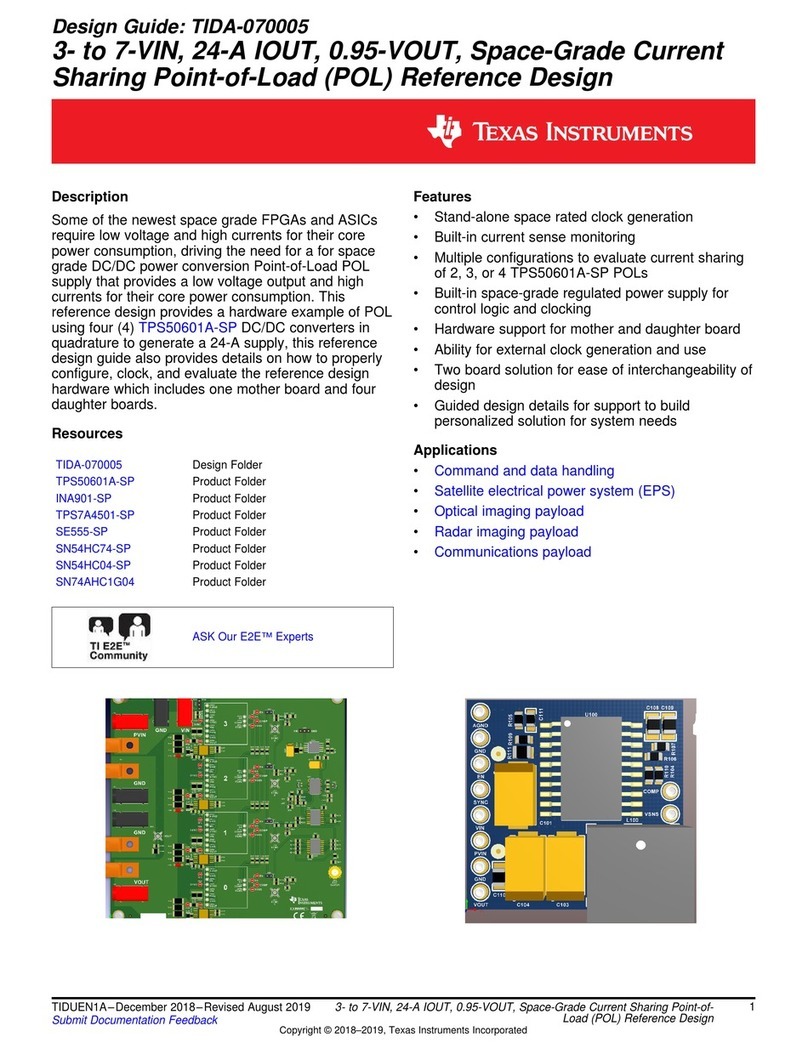
Texas Instruments
Texas Instruments TIDA-070005 Design guide
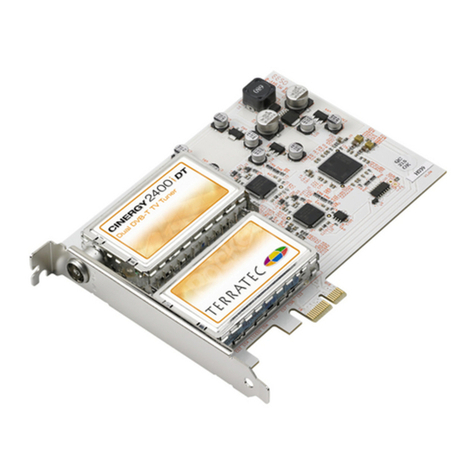
TerraTec
TerraTec CINERGY 2400 I DT Technical details
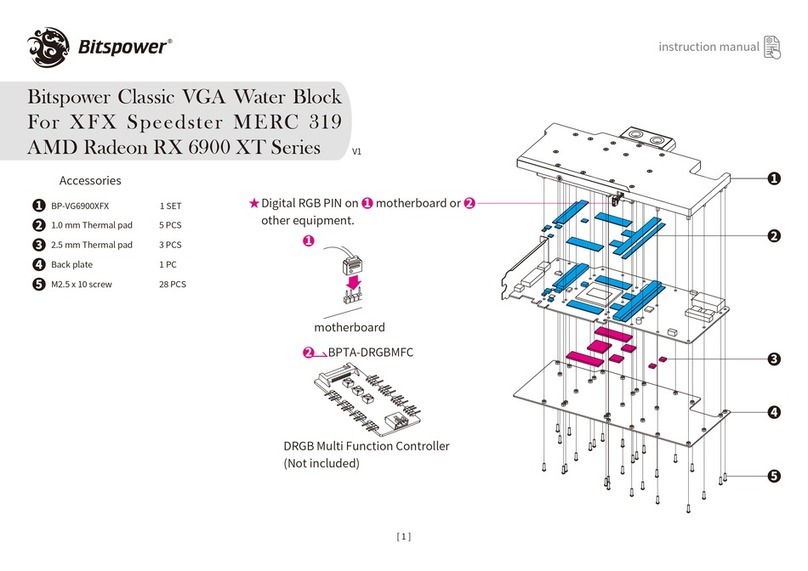
Bitspower
Bitspower BP-VG6900XFX instruction manual
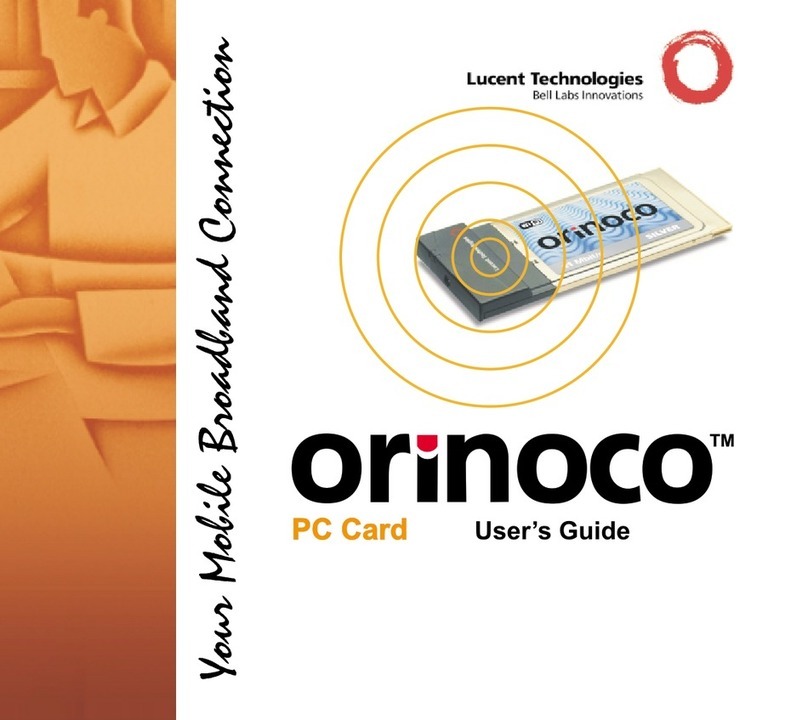
Lucent Technologies
Lucent Technologies orinoco user guide
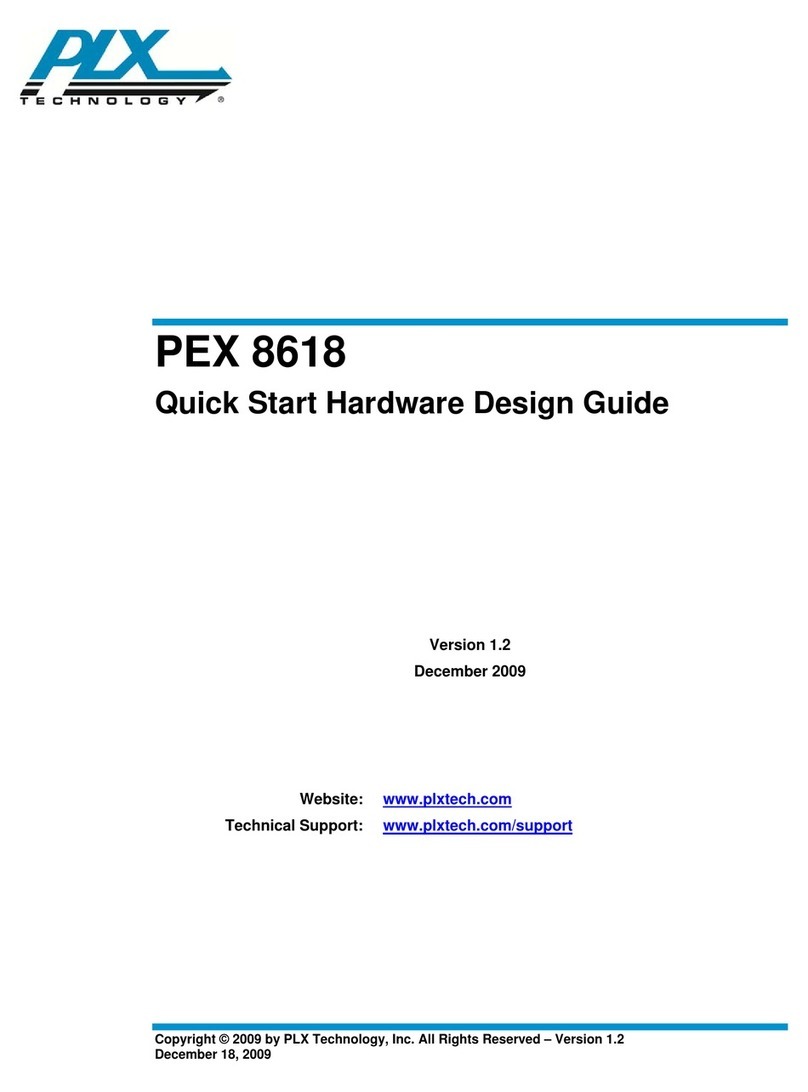
PLX Technology
PLX Technology PEX 8618 quick start guide
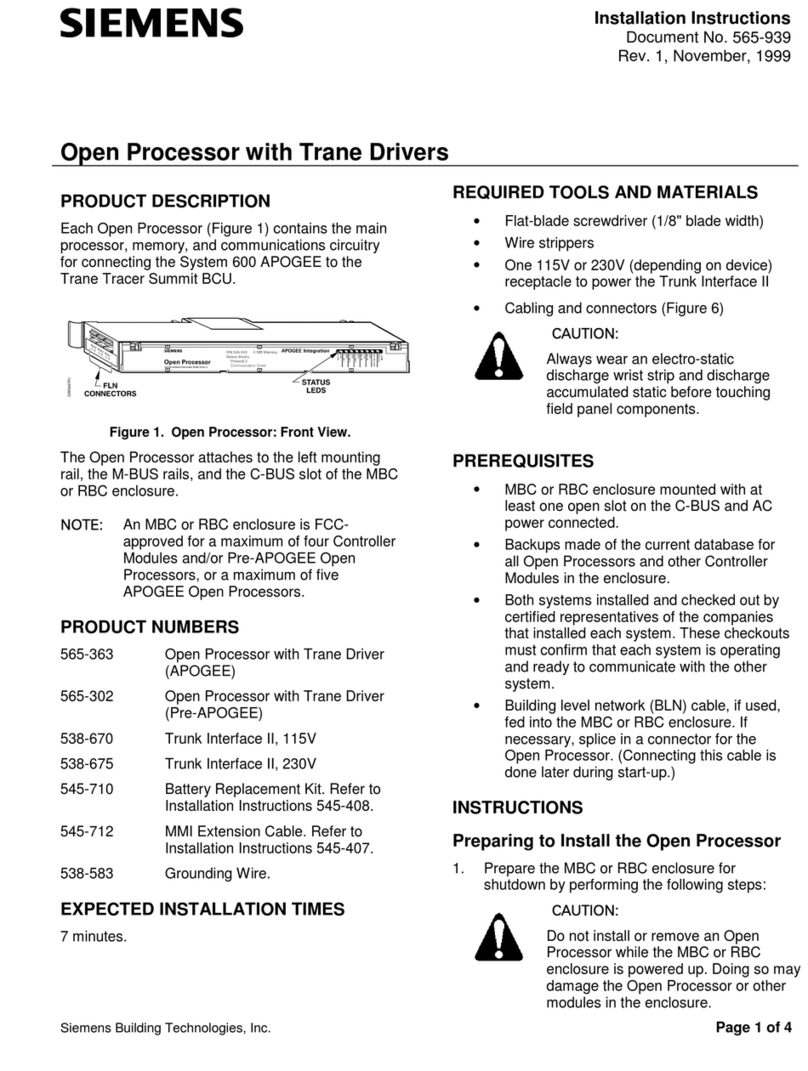
Siemens
Siemens System 600 APOGEE installation instructions
